Physical Address
304 North Cardinal St.
Dorchester Center, MA 02124
Physical Address
304 North Cardinal St.
Dorchester Center, MA 02124
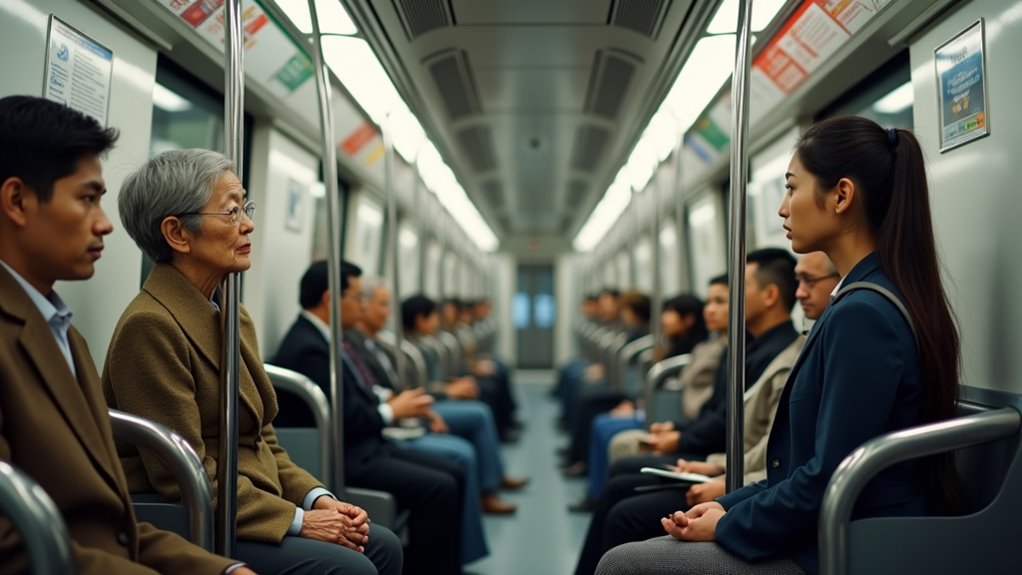
Guide yourself through global transit systems with proven safety tactics that seasoned travelers swear by—but what's their secret weapon?
Studies show that over 60% of global travelers use public transportation during their international trips, yet safety practices vary dramatically across different regions. When you’re maneuvering through unfamiliar transit systems abroad, you’ll need more than just a route map to stay secure. From Tokyo’s organized chaos to London’s Underground culture, each city presents unique challenges and protocols. Let’s explore the essential strategies that’ll help you travel confidently and safely on public transport worldwide.
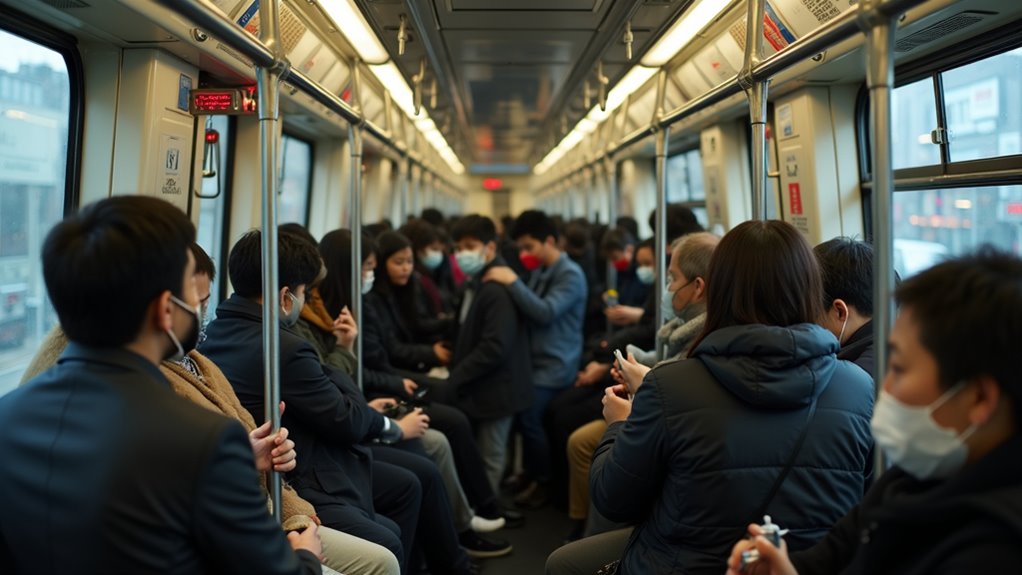
When planning to use public transport in an unfamiliar area, thorough safety research can make the difference between a smooth journey and a risky situation. Start by checking local crime rates and road safety statistics for your destination – with 1.19 million annual road deaths worldwide, these numbers vary considerably by country.
You’ll want to evaluate the quality of local transportation infrastructure and emergency response systems. Look up the nearest hospitals and save local emergency numbers in your phone. Consider that scheduled airlines are historically the safest form of motorized transport.
Research the area’s legal framework for public transport to understand what safety standards you can expect. Don’t forget to download safety-focused transport apps that provide real-time updates and alerts.
If you’re traveling internationally, verify that your insurance covers transport-related emergencies and medical evacuation in your destination country.
While major cities like Hong Kong and Tokyo boast world-class public transport networks, you’ll need to understand your local system’s unique features to navigate it safely and efficiently.
Each city has its distinct characteristics – from Hong Kong’s extensive rail-bus-ferry network to Singapore’s automated MRT system.
Before traveling, familiarize yourself with the route maps and scheduling patterns. Cities like New York run 24/7 services, while others may have limited night operations.
You’ll find tech solutions incredibly helpful – download local transport apps like Helsinki’s journey planner or Tokyo’s navigation tools.
Don’t forget to check payment systems – Hong Kong’s Octopus card and similar smart cards in other cities make travel smoother and safer by reducing the need to handle cash.
Oslo has transformed its public transit landscape by implementing biogas from bio-waste to power its city buses, making it an increasingly eco-friendly option for travelers.
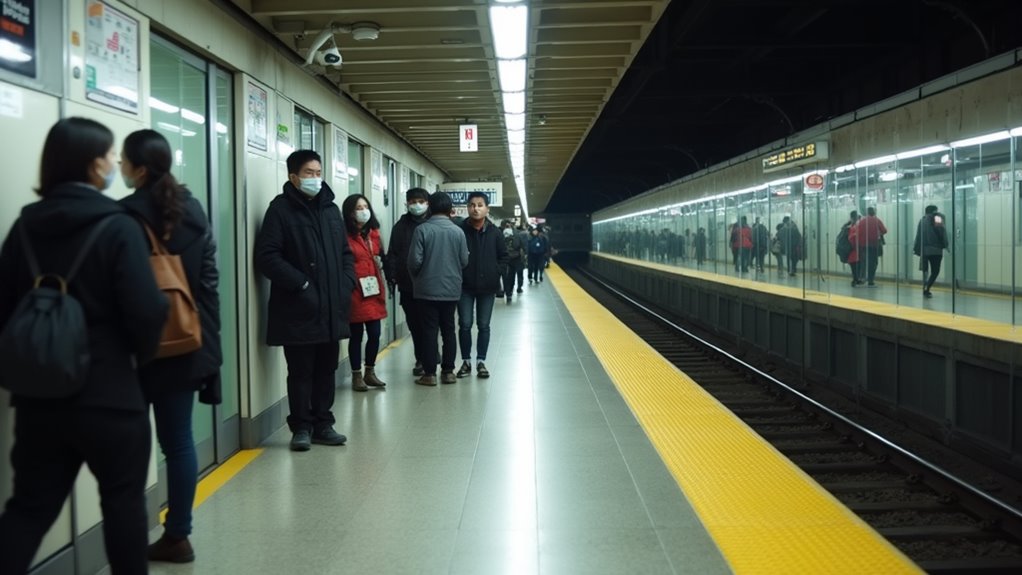
Maneuvering busy transit stations safely requires a combination of awareness and smart preparation. When you’re in transit hubs, always scan for main exits and emergency points first – it’s what seasoned travelers do instinctively.
Keep your belongings close, preferably in front-facing bags with secure zippers, and stay alert to your surroundings. Many international travelers benefit from learning basic transport phrases to better understand signage and announcements.
Essential safety practices while traversing stations include:
Remember to trust your instincts about crowded areas and stay visible in well-lit sections of the station.
Smart travelers also use transit apps for real-time updates, reducing unnecessary waiting time on platforms and minimizing exposure to potential risks.
Understanding local transit etiquette can make the difference between a smooth journey and an awkward cultural faux pas. In Japan and the UK, you should keep conversations hushed, while in India, expect and embrace the lively atmosphere of crowded carriages.
Different cultures, different transit vibes – whisper in Tokyo, chat away in Mumbai. Know before you go.
Never eat or drink on Singapore’s transit unless you’re ready to pay hefty fines. In Germany, passengers must ensure they have validated their tickets before boarding any public transport.
Watch for women-only carriages in cities like Mexico City, Tokyo, and Cairo – they’re not just suggestions but important safety measures. If you’re in Thailand, always give up your seat for Buddhist monks and stand for the national anthem.
Priority seating rules vary worldwide: they’re strictly observed in Japan but more loosely followed in North America. Remember that behaviors you take for granted at home might be considered rude or even illegal elsewhere.
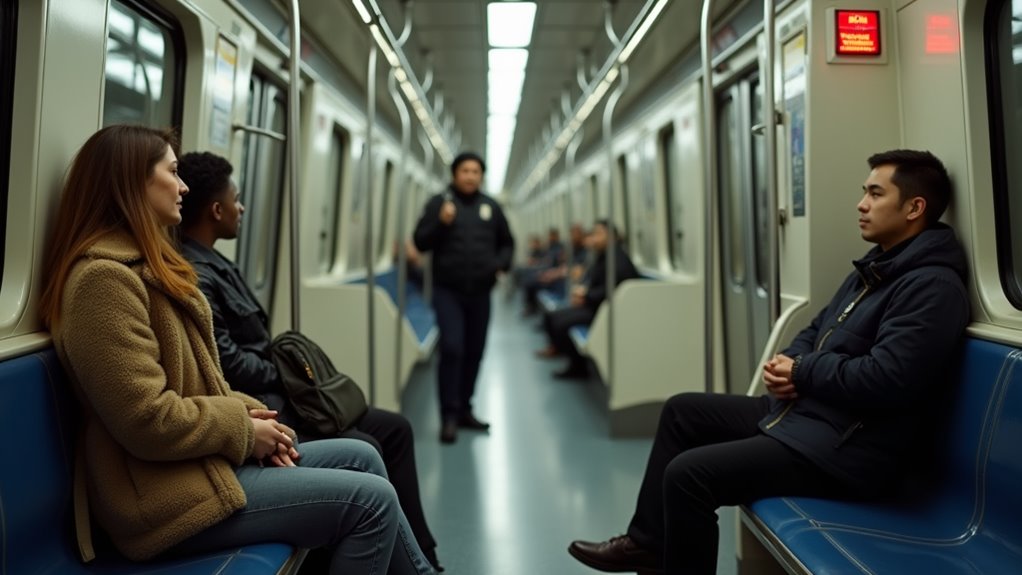
Staying safe on public transit requires constant awareness of your surroundings, much like being a defensive driver on the road. You should strive to keep your head up and your headphones low, regularly scanning for exits, security cameras, and potential concerns.
When riding public transport, protect yourself by following these essential practices:
Trust your instincts and don’t hesitate to move if you feel uncomfortable. When someone approaches you uninvited, maintain firm boundaries while staying calm. With 1.19 million deaths annually from road traffic incidents worldwide, taking precautions on any form of transportation is crucial for your safety.
When trouble strikes on public transit, having the right emergency numbers at your fingertips can make all the difference. If you’re traveling internationally, you’ll need to know that emergency numbers vary greatly by country. While North Americans are used to 911, you’ll dial 000 in Australia, 112 across the European Union, and 999 in the UK.
Keep your embassy’s contact information handy – it’s your lifeline in serious situations abroad. If you’re in tourist areas, look for specialized tourist police numbers, as they’re often better equipped to help travelers. Consider keeping both digital and printed copies of these essential numbers.
For peace of mind, save Global Rescue’s international number (+1-617-459-4200) in your phone before your trip. It’s also smart to research local emergency protocols for specific services – some countries use different numbers for police, medical, and fire emergencies.
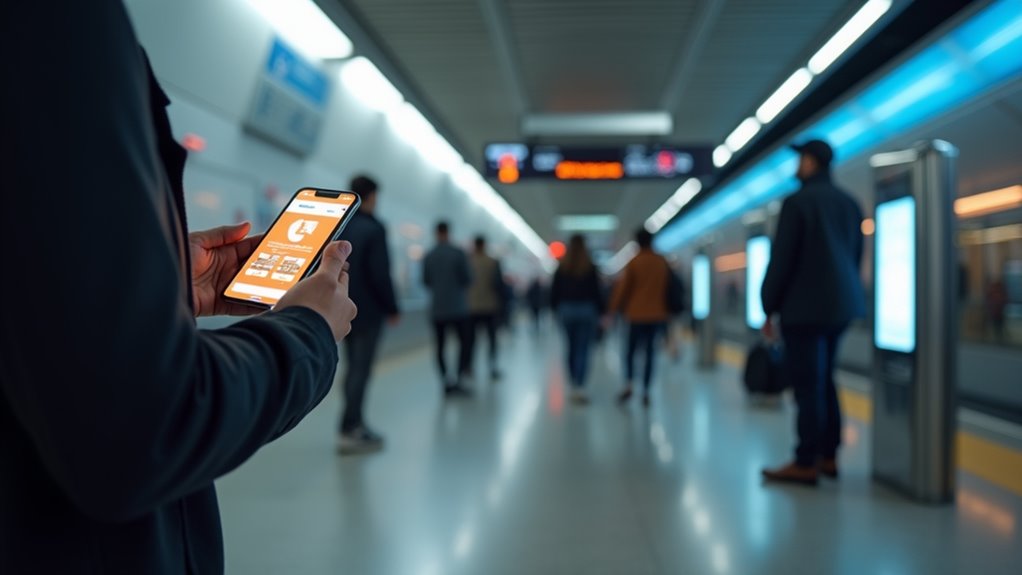
Modern technology puts safety tools right in your pocket during public transit journeys. Download local transit apps that offer real-time monitoring and alerts, especially in tech-savvy regions like Spain, Portugal, and Italy where adoption rates are highest.
Take advantage of these essential safety features:
Switch to mobile payments when possible – it’s not just convenient, it’s safer. You’ll reduce physical contact and avoid theft risks. Many transit systems now include video surveillance and enhanced security monitoring to protect passengers during their journeys.
If you’re traveling internationally, look for apps with multilingual support. They’ll help you understand safety announcements and navigate unfamiliar systems with confidence, keeping you informed and secure throughout your journey.
While technology helps keep you safe, Mother Nature adds another layer of challenges to public transit safety.
You’ll need to remain extra vigilant during extreme weather conditions, whether it’s rain, snow, or scorching heat.
When it’s wet or icy, watch your step on platforms and stairs – they can become treacherously slippery.
During storms, maintain a firm grip on handrails and stay alert for sudden vehicle movements.
If you’re traveling in extreme heat, carry water and be prepared for potential delays due to vehicle cooling issues.
Keep an eye on weather forecasts and transit apps for service updates.
You should plan to allow extra travel time during bad weather and follow any safety instructions from transit staff.
Urban commuters may find more reliable service since better infrastructure helps minimize weather-related disruptions.
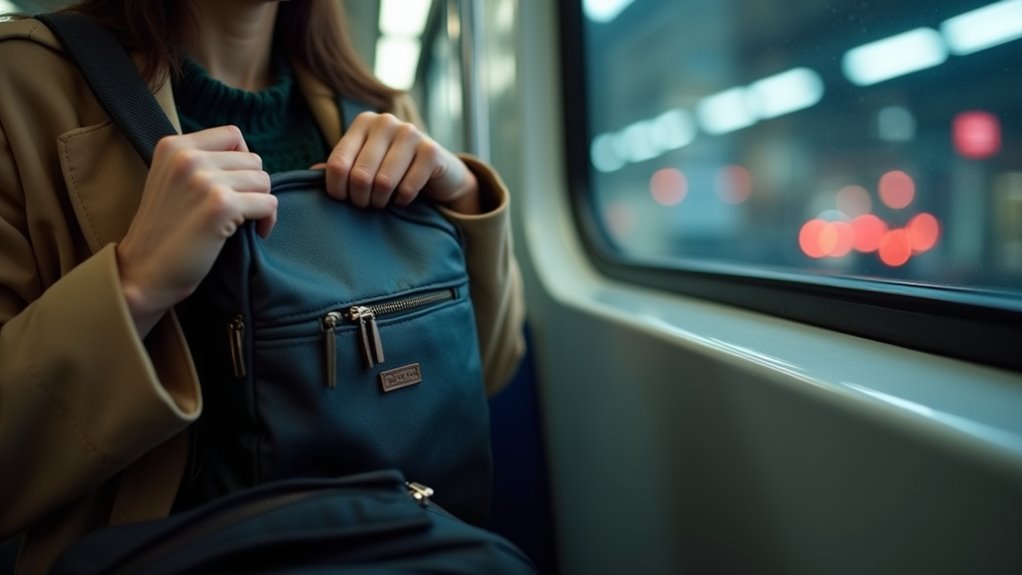
Since managing your belongings can make or break your transit experience, it’s crucial to understand both local regulations and practical security measures.
Keep in mind that international routes have nearly eight times more baggage mishandling incidents than domestic ones, so you’ll need to be extra vigilant during long-haul journeys. Taking public transportation like trains and buses is among the safest travel options available, with safety records comparable to commercial flights.
To protect your belongings effectively, follow these key practices:
Remember to research specific luggage rules for your destination, as they vary considerably between countries.
During peak travel seasons, arrive early and stay alert in crowded areas. When in doubt, follow local transport staff instructions for storing and handling your belongings.
Now that you’ve got your belongings sorted, let’s look at picking the safest way to get around. Air travel is your absolute safest bet – it’s 1,700 times safer than driving.
But when that’s not practical, buses are your next best option, offering 50 times more safety than private cars. Commercial airlines maintain an impressive .006 deaths per billion miles traveled record.
If you’re choosing between trains and buses, both are excellent choices, though buses edge out trains in many countries.
While trains operate in controlled environments with automated systems, buses benefit from professional drivers and strict safety protocols.
If you’re near water, don’t hesitate to take large commercial ferries – they’re remarkably safe thanks to strict maritime regulations.
Whatever you choose, you’re making a smart move by picking public transport over private cars – it’s about ten times safer per mile.
Being street-smart on public transport isn’t just about following rules – it’s about developing travel instincts. You’ll find that locals often know best, like Tokyo’s women-only train cars that emerged from passenger feedback. Keep your wits about you, use those travel apps, and don’t be afraid to trust your gut. Whether you’re hopping on Bangkok’s BTS or London’s Tube, you’re now equipped to ride with confidence and awareness.